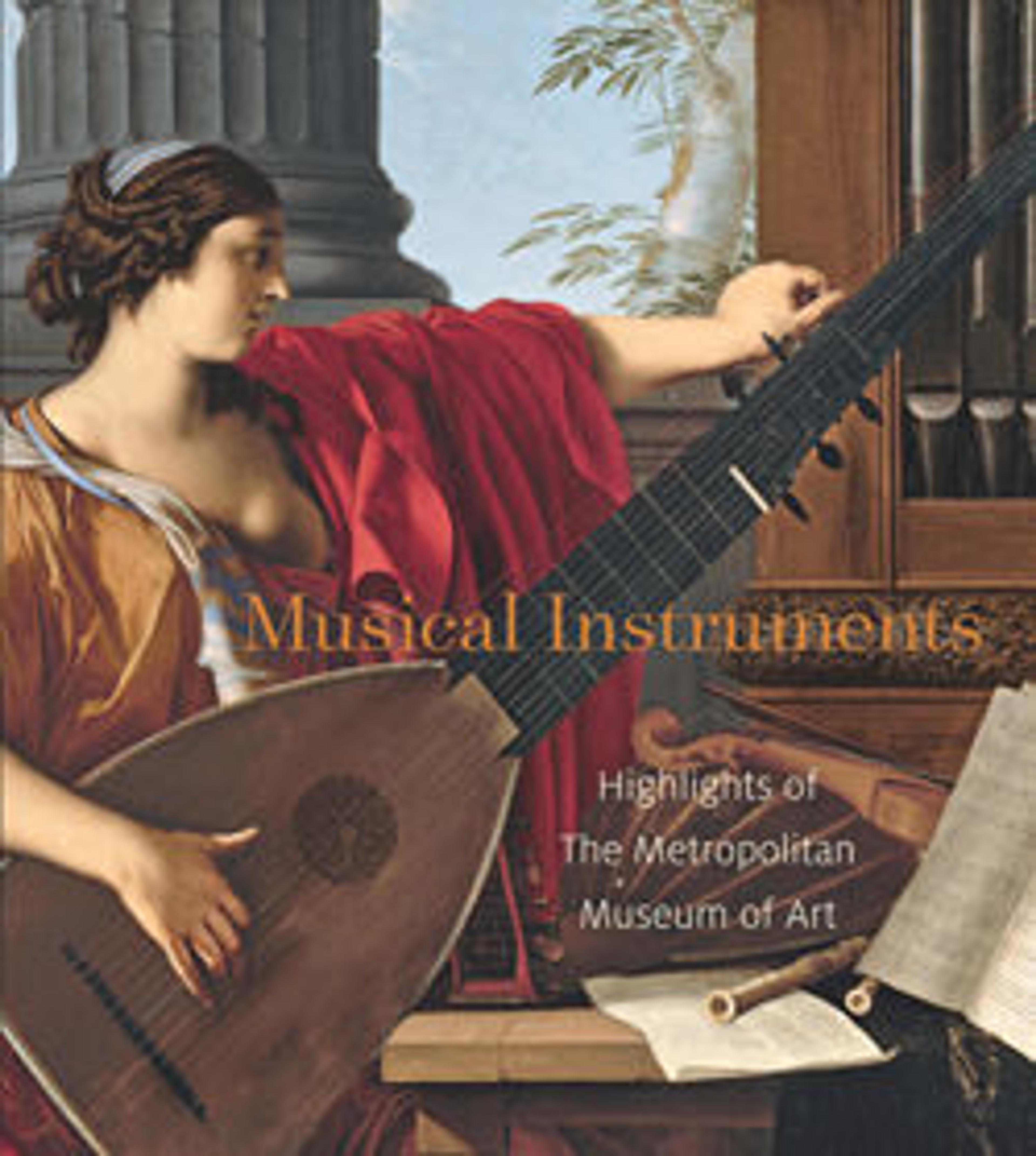Hardanger Fiddle
The hardanger fiddle (hardingfele) is the folk fiddle of Norway originally used in the farming and fishing communities of the Hardangerfjord in the western part of the country. Traditionally, the instrument was used to play songs, dances, and wedding music. It has also been embraced by nationalistic composers such as Edvard Grieg, who incorporated folk tunes played on the hardingfele into his works.
Hardanger fiddles generally have four bowed strings and an additional four sympathetic strings beneath the bridge; the latter are not played directly but are excited into vibration by the bowed strings above, adding a subtle richness to the sound. These often ornately inlaid instruments first appeared in the 1650s, and their short, straight necks and fingerboards recall those of the violin during the Baroque period. The prolific eighteenth-century fiddle makers Isak Nielsen (Skaar) Botnen and his son, Trond Isaksen Flatebø, who made this example, popularized the instrument and are responsible for the tradition that continues today.
Description: Violin-shaped body, decorated at the edges with ink lines and dots; two-piece back; fingerboard and tailpiece decorated with ivory and mother-of-pearl; four melody strings and four sympathetic strings, the latter attached to hooks of the tailpiece; bridge with two metal pieces notched for the sympathetic strings to be secured; small carved head at the end of the pegbox.
Hardanger fiddles generally have four bowed strings and an additional four sympathetic strings beneath the bridge; the latter are not played directly but are excited into vibration by the bowed strings above, adding a subtle richness to the sound. These often ornately inlaid instruments first appeared in the 1650s, and their short, straight necks and fingerboards recall those of the violin during the Baroque period. The prolific eighteenth-century fiddle makers Isak Nielsen (Skaar) Botnen and his son, Trond Isaksen Flatebø, who made this example, popularized the instrument and are responsible for the tradition that continues today.
Description: Violin-shaped body, decorated at the edges with ink lines and dots; two-piece back; fingerboard and tailpiece decorated with ivory and mother-of-pearl; four melody strings and four sympathetic strings, the latter attached to hooks of the tailpiece; bridge with two metal pieces notched for the sympathetic strings to be secured; small carved head at the end of the pegbox.
Artwork Details
- Title: Hardanger Fiddle
- Maker: Isak Nielsen (Skaar) Botnen (Norwegian, 1669–1759)
- Maker: Trond Isaksen Flatebø (Norwegian, 1713–1772)
- Date: 1756
- Geography: Western Norway, Hardanger Region, Norway
- Culture: Norwegian
- Medium: Pine, birch, and other woods, bone, lignum vitae and mother-of-pearl inlay.
- Dimensions: 22 3/8 × 7 3/8 × 3 1/2 in. (56.8 × 18.7 × 8.9 cm)
- Classification: Chordophone-Lute-bowed-unfretted
- Credit Line: Gift of Miss Alice Getty, 1946
- Object Number: 46.34.7a
- Curatorial Department: Musical Instruments
More Artwork
Research Resources
The Met provides unparalleled resources for research and welcomes an international community of students and scholars. The Met's Open Access API is where creators and researchers can connect to the The Met collection. Open Access data and public domain images are available for unrestricted commercial and noncommercial use without permission or fee.
To request images under copyright and other restrictions, please use this Image Request form.
Feedback
We continue to research and examine historical and cultural context for objects in The Met collection. If you have comments or questions about this object record, please contact us using the form below. The Museum looks forward to receiving your comments.
